For One Night, I Became Brunello-man!
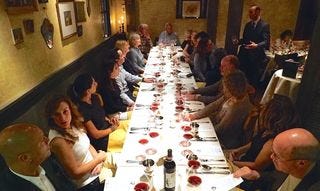
It was a dream assignment:
Napaman was invited last night to a private dinner in Yountville at Bottega, one of northern California’s top Italian restaurants, to celebrate a singular Italian wine from a singularly good vintage:
We’re talking about the heralded, and much hoopla’d, 2010 vintage of Brunello di Montalcino.
The 44 lucky souls who attended the event paid $195 each for the 4-course dinner; they were served exceptional 2010 Brunello wines with each course.
As a twist, guests were invited to bring ANY vintage of ANY Brunello di Montalcino wine from their personal cellar to share with tablemates.
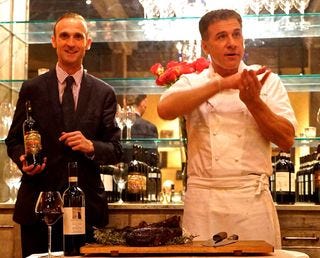
The event was hosted by Michael Chiarello, chef/owner of Bottega, (right, above) and by his genial wine director, Massimiliano Giovannoni (left, above).
The 2010 Brunellos are just hitting the street now; wine writers who have had access to the new vintage are calling it “the best vintage of this Sangiovese-based wine in living memory.”
Robert Parker’s Italian specialist, Monica Larner, says that the hype surrounding the 2010 Brunellos is not hyperbole. She emphasizes:
“The 2010 vintage is iconic for Montalcino ... it shows the amazing versatility of the Sangiovese grape with a level of clarity that I have never encountered. This vintage restores my confidence in a grape variety that has been both overhyped and underappreciated, sometimes at the same time.”
Even more bombastic is this observation from former Wine Spectator writer James Suckling:
"2010 for Brunello di Montalcino is the greatest modern vintage of Italy's most famous red wine region. Never have the wines been so profound in quality, character, and quantity from the best hillside vineyards of Montalcino."
Do comments like these raise the bar for Brunello, or jack it up so high that no wine can live up to the hype? Napaman was compelled to determine for himself whether such critical excitement over 2010 Brunellos is merited.
The wines served at dinner
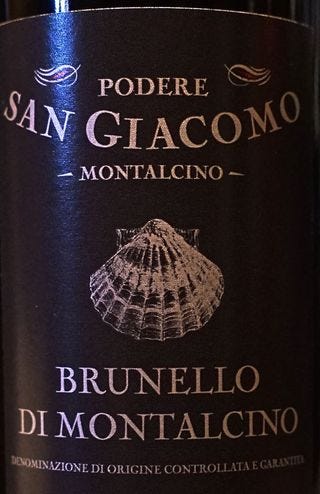
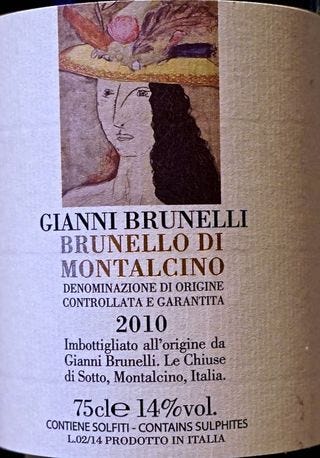
The six 2010 Brunellos served were all exceptional wines. I have numerous exclamation marks on the pages of my tasting notes and I scored the wines in a range of 93- to 97-points. They were that good.
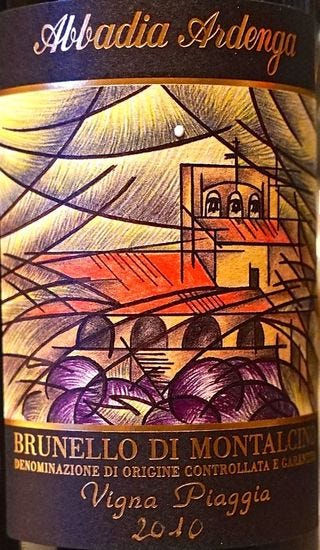
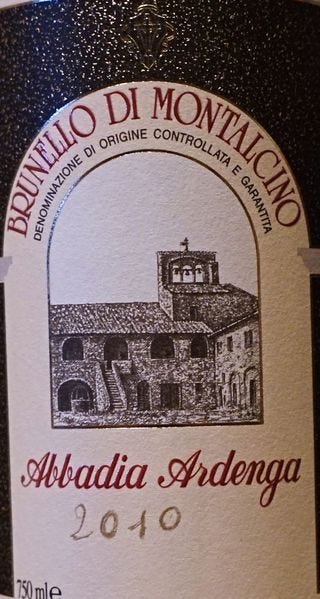
The common aromas in these wines are plums and roses, which wafted off the just-poured wines; there is a juicy, salty, balsamic-and-tea acidity profile on the palate, an undercurrent in each of these wines. The commonest descriptors, which I found myself applying: tea cake spices, plum, and tea.
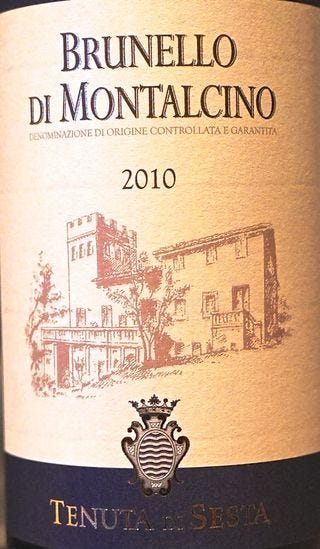
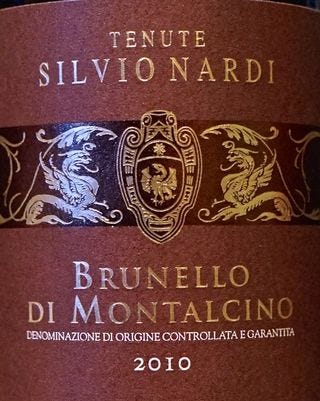
With Napa Valley Cabs, the overall flavor profile is one of ripe red, or dark, fruit and the finish is usually jammy, or fruit-driven; with a Brunello, certainly at this young age, there was an evident brisk acidity, something akin to that experienced from another great Italian grape, Barbera, grown in Piedmont.
This makes Brunello, with its noticeable minerality, a terrific, food-friendly wine; it clears your palate each time you go back and take a sip. It is not sweet, cloying, or syrupy.
This was the Brunello I brought; Massi says that 2004 Brunellos are his favorite-ever vintage of this Sangiovese-based wine. Table companions said it was one of their favorite wines of the night – Maybe this guy Massi knows something about Brunello after all!
A brief history of Brunello
(Hey! this is interesting stuff, and even though it’s not on the final exam – pay attention!)
Brunello di Montalcino, a red wine, made from the Sangiovese grape, is produced from vineyards surrounding the town of Montalcino, about 70 miles south of Florence, in Tuscany.
In 1865, at an agricultural fair in Montalcino, the prize-winning wine was a red which locals called “Brunello.”
Brunello, a diminutive form of "bruno," which means brown in Italian, was the name given to what was initially believed to be a unique grape variety grown only in Montalcino.
Wrong!
It turns out that the “Brunello grape” was, is, and continues to be Sangiovese, the most planted grape across Tuscany; but the original name stuck, so all the wine from this commune continues to be called “Brunello di Montalcino, even though it’s 100 percent Sangiovese.
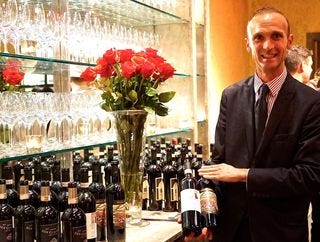
Massimiliano, who is called Massi for short, oversaw the service of 36 bottles of wine poured for diners during the evening. That’s almost a bottle per person.... plus the wines some guests brought.
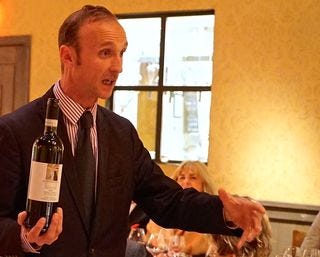
The wait staff and wine servers pulled off a flawless dinner; if a small table in a regular restaurant had this kind of food, wine and attention to detail, guests would be amazed. But to provide this level of service for 44 diners at the same time – that’s a WOW! moment.
In the mid-19th century, a farmer named Clemente Santi isolated plantings of Sangiovese and produced a wine that could be aged for a considerable period of time. In 1888, his grandson, Ferrucio Biondi-Santi, released a modern version of Brunello di Montalcino, which was aged for a decade in large wooden casks.
By the end of World war II, Brunello di Montalcino had developed a reputation as one of Italy's top wines. The earliest commercial producer was Biondi-Santi. The high price and prestige of its wines encouraged others to emulate the style.
By the 1960s, there were 11 regional producers of Brunello.
By 1970, the number of producers had grown to 25.
Today there are more than 200 Brunello producers. The wine definitely has traction.
Our hosts for the evening
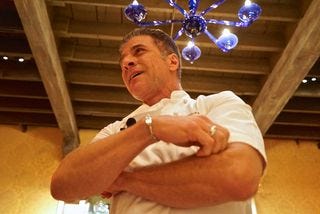
Chef Michael Chiarello
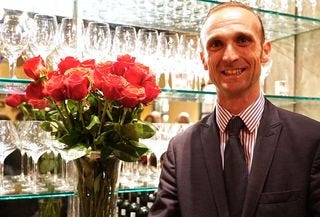
Sommelier Massimiliano Giovannoni
Traditionally, Brunello is aged three years "in botte," large Slavonian oak casks, which impart minimal oak flavor.
Some winemakers today use small French barriques to impart a hint of spice and vanilla.
Most producers separate production between a normale and a reserva bottling.
Normale bottles are released 50 months after harvest, while riserva wines are released 62 months following harvest.
The Sangiovese grape is the only grape permitted in Brunello di Montalcino DOCG wines.
Brunello is now so popular in the US that about 30 percent of all the Brunello di Montalcino made is sold here, according to James Suckling.
The dinner
In addition to superb wines, guests were treated to an elaborate dinner from chef Chiarello, who came out twice during dinner service to entertain and inform. He told about the excursion, which he and Massi took to Montalcino, where Massi grew up and where he earned his sommelier certification.
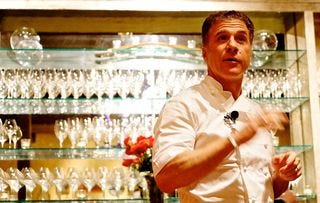
“Massi is like the mayor of Montalcino,” says chef Chiarello. “Everywhere we went, people came up to him to discuss their wine, their lives, their families.”
To complement the just-released 2010 Brunellos, chef Chiarello created a four-course-plus-dessert menu.
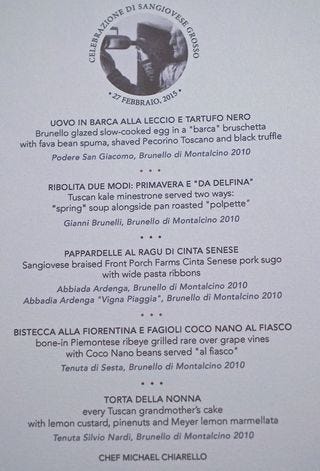
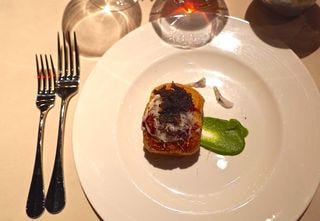
A Brunello-glazed, slow-cooked egg, served in a bruschetta basket, topped with shaved Pecorino cheese and black truffle.
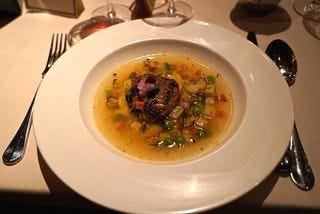
Chef Chiarello married classic ribolita ingredients with a presentation twist, which he learned from Craig Stoll, chef/owner of Delfina, in San Francisco.
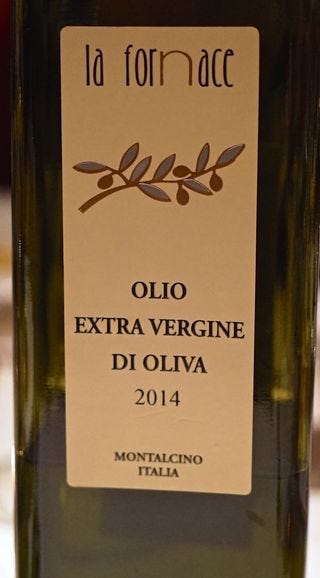
Wine wasn’t the only liquid celebrated at this vintage-release dinner; a 2014, just released, olive oil, was served with the delicious ribolita.
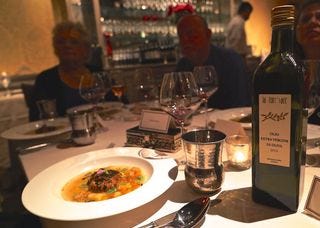
As Massi has deep connections in Montalcino, he knows the producer of this olive oil and urged him to export a small quantity to Yountville for the Brunello dinner. The oil, perfumed, green and luscious, would earn 97 points if olive oils were rated like wine.
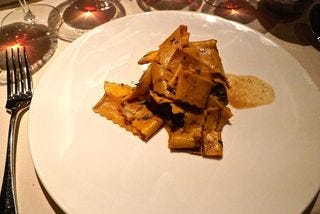
Sangiovese-braised pork sugo served with pappardelle. Served with two different 2010 Brunellos from producer Abbadia Ardenga.
Cooks in the kitchen, under chef Chiarello’s direction, grilled the bistecca over an open flame; the chef said the beef was Chianina, the authentic source of bistecca in Italy.
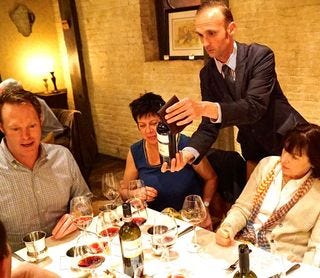
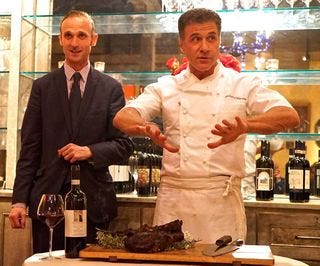
Massi and the chef kibbitzed while showing guests how to properly carve a bistecca; they were as amusing and entertaining as Click and Clack, the Tappet brothers, on NPR’s applauded radio program, Car Talk – they were that engaging and yet informative. A great show, guys!
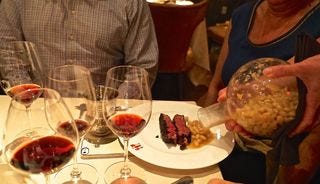
The steak was served with beans cooked in the oven “al fiasco,” in this glass vessel.
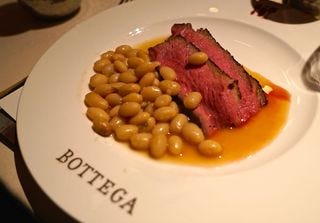
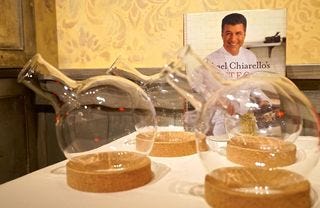
The beans were baked in glass flasks, or fiasci, in a wood-fired oven at 1200 F. The flasks were made specifically for chef Chiarello, who learned to prepare beans in this style on the trip he took with Massi to Montalcino.
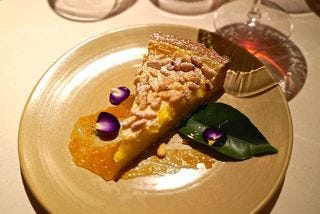
Chiarello’s famous “Torta della nonna,” the lemony cake, which grandmothers traditionally serve in Tuscany, made with lemon custard, pine nuts and a Meyer lemon marmalade.
There is discussion at Bottega that the restaurant may consider hosting a series of special, regional Italian dinners like the Montalcino dinner last night.
If they do, you’d be well advised to sign up. Certainly Brunelloman will. Er, napaman will.

